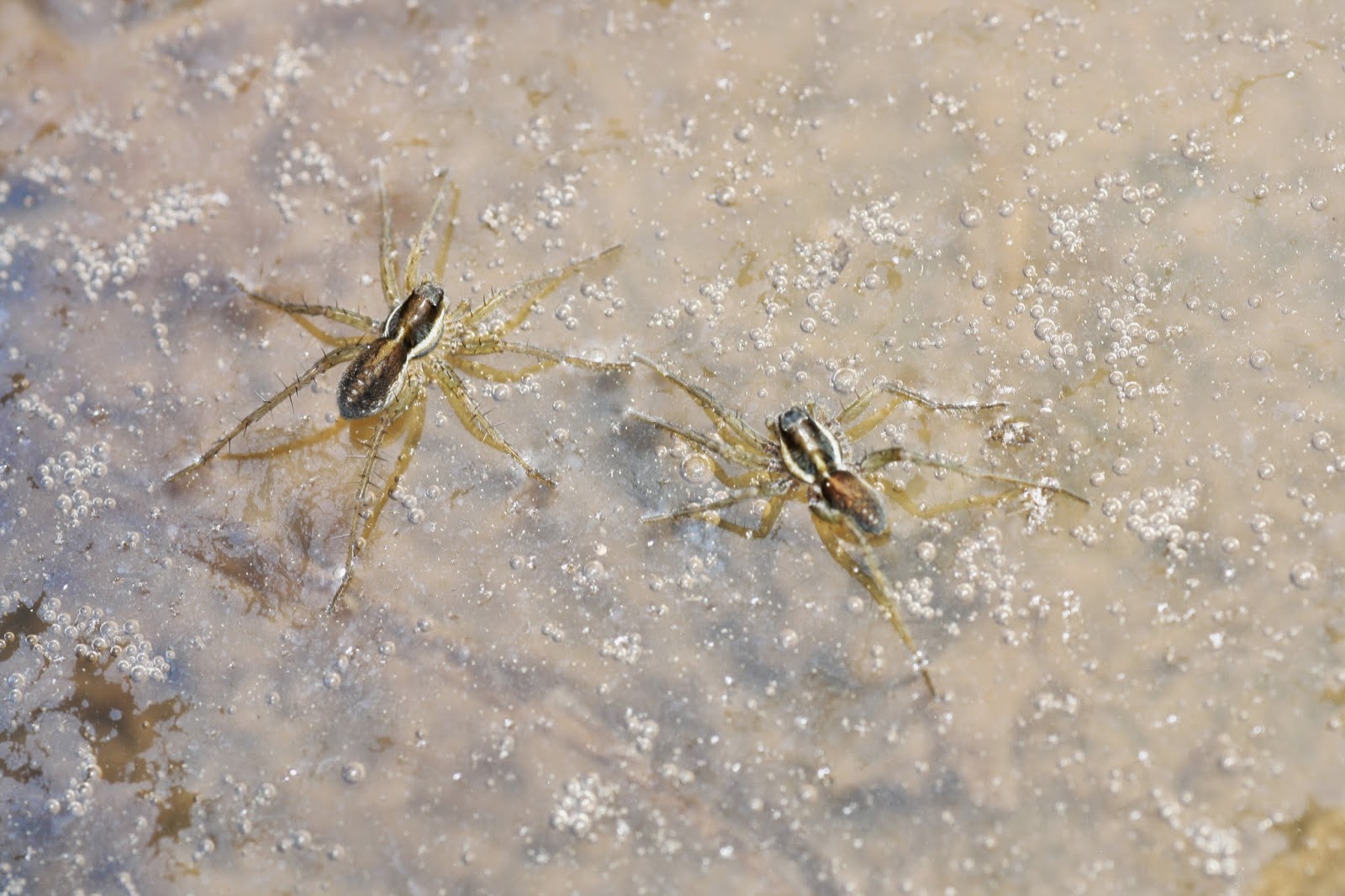Finally, the temperatures are in the balmy 80s. Whereas last week the marsh looked brown and dead, with few signs of 6- or 8- legged life besides the ubiquitous Pardosa littoralis, the thin legged wolf spider, this week was very different. Planthoppers and flies happily cavorted around in the grass or on the mud flats. Water boatmen and mosquito larvae frolicked in the little pools. A rare guest visited from the woods nearby.
Hister beetles (Histeridae) love decaying matter- carrion, dung, and rotting plants. They are not scavengers but predators searching for a snack of maggots or other arthropods found in those habitats. Perhaps this beetle was attracted by a dead animal; it also got a little hitchhiker or maybe a transitory companion, a tiny red mite running up and down the much larger beetle.
The thin legged wolf spiders (Pardosa littoralis) were as numerous as ever scattering in all directions. These spiders are semi-aquatic and run on water as if it were dry land. They can reach densities of up to several hundred per square meter, and are voracious predators of planthoppers and other invertebrates. This spider is a particularly good candidate for an indicator species of healthy salt marsh environment.
While the spiders may snatch a mosquito larva out of the water, the salt marsh mosquitoes have evolved to avoid predation by unpredictable and irregular emergence, and to overcome any generalist predators by sheer numbers. The “balling” behavior is typical of the late instar or stages of the eastern salt marsh mosquito, Aedes sollicitans. Hundreds or thousands of larvae pack closely together to form tight larval “balls” in some potholes. The advantages of this behavior are not very clear, but it is still very impressive.





